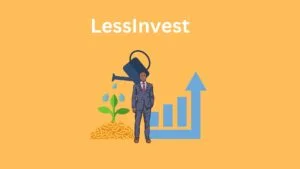If you want to grow finacially, it’s important to learn how to make your money work for you. With so many options available, it can be confusing to know where to start. This article will explore ten smart ways to invest your money, helping you to make informed decisions that can lead to financial success. Whether you’re saving for a big purchase or planning for retirement, these strategies can help you achieve your goals.
Key Takeaways
- Start by putting your money in a high-yield savings account to earn more interest.
- Setting clear financial goals can help you use your money wisely.
- Investing in the stock market can lead to higher returns than keeping money in a savings account.
- Pay off high-interest debts to free up more money for investing.
- Diversifying your investments can help manage risk and improve returns.
1. Creat A High-Yield Savings Account
A high-yield savings account is a smart choice for your extra money. These accounts offer better interest rates than regular savings accounts. This means your money can grow faster over time. Here are some key points to consider:
- Higher Interest Rates: You earn more interest compared to traditional savings accounts.
- Safety: Your money is still safe and insured, just like in a regular bank account.
- Easy Access: You can access your money when you need it without penalties.
Benefits of High-Yield Savings Accounts
| Feature | High-Yield Savings Account | Traditional Savings Account |
|---|---|---|
| Interest Rate | Higher | Lower |
| Accessibility | Easy | Easy |
| Insurance | Yes | Yes |
A high-yield savings account can help you build an emergency fund or save for future goals. It’s a simple way to make your money work harder for you.
2. Invest In Real Estate
Investing in real estate can be a smart way to grow your money. Owning property can provide both rental income and the chance for your property to increase in value over time. Here are some key points to consider:
Benefits of Real Estate Investing
- Steady Income: Rental properties can provide a regular cash flow.
- Appreciation: Properties often increase in value, which can lead to profit when sold.
- Tax Advantages: There are various tax benefits available for real estate investors.
Types of Real Estate Investments
- Rental Properties: Buy homes or apartments to rent out.
- Real Estate Investment Trusts (REITs): Invest in real estate without owning physical property.
- Real Estate Syndications: Pool money with other investors to buy larger properties.
Investing in real estate requires careful planning and research. Make sure to understand the market and your financial goals before diving in.
3. Invest In Stock Market

Investing in the stock market can be a great way to grow your money over time. Stocks are shares of ownership in a company, and they can provide high returns if the company does well. Here are some key points to consider:
Benefits of Investing in Stocks
- Potential for High Returns: Stocks can grow significantly, especially if the company expands.
- Dividends: Some companies pay dividends, which are a portion of their profits shared with shareholders.
- Ownership: When you buy stocks, you own a piece of the company.
Risks to Keep in Mind
- Market Volatility: Stock prices can go up and down quickly, which can be stressful.
- Long-Term Commitment: It’s important to stay invested for a long time to see good returns.
- Research Required: You need to understand the companies you invest in to make smart choices.
Stock Market Basics
| Term | Definition |
|---|---|
| Stock | A share in the ownership of a company. |
| Dividend | A payment made by a company to its shareholders. |
| Bull Market | A period when stock prices are rising. |
| Bear Market | A period when stock prices are falling. |
Investing in the stock market requires patience and knowledge. The longer you stay invested, the more your money can grow.
4. Invest In S&P Funds

Investing in S&P funds can be a smart choice for many people. These funds track the performance of the S&P 500, which includes 500 of the largest companies in the U.S. This means you are not just putting your money into one company, but spreading it across many, which can lower your risk.
Why Choose S&P Funds?
- Diversification: You invest in a wide range of companies, reducing the risk of losing money.
- Historical Returns: The S&P 500 has historically returned about 11% per year on average.
- Easy to Manage: These funds require less active management compared to other investments.
How to Invest in S&P Funds
- Open a Brokerage Account: Choose a platform that offers S&P funds.
- Research Funds: Look for funds that track the S&P 500 index.
- Invest Regularly: Consider setting up automatic contributions to grow your investment over time.
Investing in S&P funds is a straightforward way to grow your wealth over time. By investing in a broad market index, you can benefit from the overall growth of the economy.
5. Indexed Mutual Funds
Indexed mutual funds are a smart way to grow your money. These funds invest in a wide range of stocks, which helps reduce risk. They usually follow a specific index, like the Dow Jones or NASDAQ, meaning they invest in all the companies in that index.
Benefits of Indexed Mutual Funds
- Lower Fees: Unlike actively managed funds, indexed mutual funds have lower management fees.
- Consistent Performance: They often perform better than most actively managed funds over time.
- Diversification: Investing in many stocks at once helps spread out risk.
How to Get Started
- Choose a Fund: Look for indexed mutual funds that track an index you like.
- Open an Account: You can invest through a brokerage or a financial advisor.
- Invest Regularly: Consider setting up automatic contributions to grow your investment over time.
Investing in indexed mutual funds can be a great way to build wealth without taking on too much risk. They offer a simple and effective way to invest in the stock market.
6. Use Rewards Credit Card

Using a rewards credit card can be a smart way to earn money while you spend. If you pay off your balance every month, you can earn rewards without paying interest. Here are some key points to consider:
- Choose a card with no annual fee: This way, you can maximize your rewards without extra costs.
- Pay your balance in full: Avoid interest charges by paying off your card each month.
- Track your rewards: Keep an eye on how many points or cash back you earn to make the most of your spending.
Benefits of Using a Rewards Credit Card
- Cash Back: Many cards offer a percentage of your spending back as cash.
- Travel Rewards: Some cards provide points that can be redeemed for flights or hotel stays.
- Discounts and Offers: You may receive special deals or discounts at certain retailers.
Using a rewards credit card wisely can help you earn money on purchases you would make anyway. Just remember to stay disciplined and pay off your balance to avoid debt.
7. Set Financial Goals
Setting financial goals is essential for guiding your money decisions. Having clear goals gives you a sense of direction and purpose. Without goals, it can be hard to know where to start or what to aim for.
Types of Financial Goals
- Short-term goals: These are goals you want to achieve within a year, like saving for a vacation or a new gadget.
- Medium-term goals: These might take one to five years, such as buying a car or saving for a wedding.
- Long-term goals: These are for the future, like planning for retirement or buying a house.
How to Set Financial Goals
- Make them SMART: Ensure your goals are Specific, Measurable, Achievable, Relevant, and Time-bound.
- Break them down: Divide larger goals into smaller, manageable steps.
- Track your progress: Regularly check how close you are to reaching your goals.
Planning your financial future can be challenging, but having clear goals helps you visualize what you need to save and when.
Example of a Simple Financial Goal Table
| Goal Type | Goal Description | Time Frame | Amount Needed |
|---|---|---|---|
| Short-term | Save for a vacation | 6 months | $1,200 |
| Medium-term | Buy a car | 2 years | $10,000 |
| Long-term | Save for retirement | 30 years | $500,000 |
By setting and working towards your financial goals, you can make your money work for you!
8. Get Rid Of High-Cost Debt
High-cost debt can be a major obstacle to building wealth. Getting rid of high-interest debt should be a top priority. Here are some key points to consider:
- Understand the Costs: High-interest rates on loans can eat away at your finances. For example, credit cards can charge up to 35% interest per year, while personal loans might have rates around 20%.
- Pay Off Debt Quickly: The sooner you pay off high-cost debt, the more money you save. Paying off a credit card in full can be like earning a 35% return on your investment.
- Create a Plan: Make a budget that prioritizes paying off high-cost debt. This will help you focus on reducing what you owe.
| Type of Debt | Average Interest Rate |
|---|---|
| Credit Card | Up to 35% |
| Personal Loan | Around 20% |
| Payday Loan | Up to 400% |
Eliminating high-cost debt is essential for financial growth. It frees up money that can be used for savings or investments, helping you build a more secure future.
9. Tax-Loss Harvesting
Tax-loss harvesting is a smart strategy that can help you save money on taxes while investing. By selling investments that have lost value, you can offset gains from other investments, reducing your overall tax bill. Here’s how it works:
- Identify Losing Investments: Look for stocks or assets in your portfolio that are currently worth less than what you paid for them.
- Sell the Losing Investments: Sell these assets to realize the loss. This loss can then be used to offset any gains you have made from other investments.
- Reinvest Wisely: After selling, consider buying a similar investment to maintain your market position without violating tax rules.
Benefits of Tax-Loss Harvesting
- Lower Tax Bills: Reduces the amount of taxes you owe on capital gains.
- Continued Investment: Allows you to stay invested in the market while managing tax liabilities.
- Flexibility: You can use losses to offset gains in the current year or carry them forward to future years.
Important Considerations
- Wash Sale Rule: Be aware of the wash sale rule, which disallows a tax deduction if you buy the same or a substantially identical investment within 30 days before or after the sale.
- Long-Term Strategy: This should be part of a broader investment strategy, not just a one-time action.
Tax-loss harvesting can be a valuable tool for investors looking to maximize their returns while minimizing their tax burden. Always consult with a tax professional to ensure you’re making the best decisions for your financial situation.
10. Portfolio Diversification

Diversification is a smart way to invest your money. It helps reduce risk by spreading your investments across different areas. Instead of putting all your money into one type of investment, you can mix it up. Here are some key points to consider:
- What is Diversification?
Diversification means having a variety of investments. This can include: - Why is it Important?
- How to Diversify Your Portfolio:
Diversification is not a guarantee of profit or protection against loss, but it is a key strategy for managing risk in your investment journey.
Final Thoughts on How To Make Your Money Work for You
In conclusion, making your money work for you is all about smart choices and planning. By exploring options like high-yield savings accounts, investing in stocks, or even real estate, you can grow your wealth over time. Remember, it’s important to set clear goals and keep track of your spending. Also, don’t forget to pay off any high-interest debt, as it can hold you back from reaching your financial dreams. With patience and the right strategies, you can turn your extra cash into a powerful tool for your future.
Frequently Asked Questions
What is a high-yield savings account?
A high-yield savings account is like a regular savings account but pays more interest. It helps your money grow faster over time.
How can I start investing in real estate?
To invest in real estate, you usually need to save for a down payment. You can buy property to rent out or fix up and sell.
What are S&P funds?
S&P funds are investments that include shares from 500 of the biggest companies in the U.S. They are known for being a steady way to invest.
What is tax-loss harvesting?
Tax-loss harvesting is a strategy where you sell investments that have lost value to reduce your tax bill on gains from other investments.
Why should I set financial goals?
Setting financial goals helps you focus your saving and spending. It gives you a clear idea of what you want to achieve with your money.
How does portfolio diversification work?
Portfolio diversification means spreading your investments across different types of assets. This can help reduce risk and improve your chances of making money.




